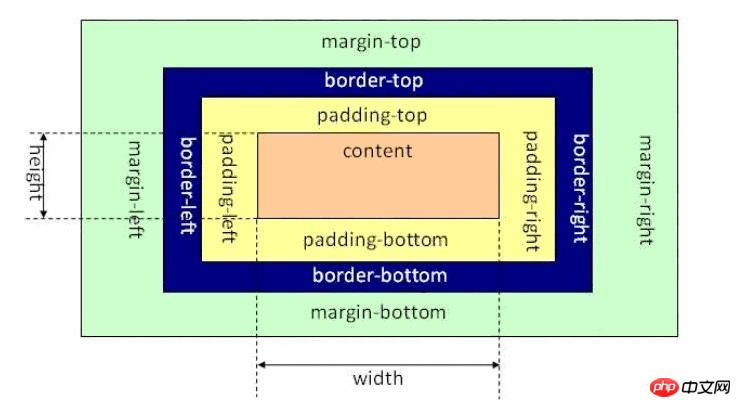Home > Article > Web Front-end > Summarize several common div+css layout examples
The most important thing in learning front-end HTML and CSS technology is practice. No matter how many tutorials, video courses or related books your friends have read, you will have a new understanding of these only by practicing them yourself. Sometimes I can understand other people's code at a glance, but I can't start writing it myself; sometimes I can't understand technical knowledge and problems, no matter how much I think about it, I can't figure it out, etc. This article will introduce to friends various common div+css layout methods and practical skills.

DIV + CSS layout related content
1. DIV+CSS layout style detailed explanation
a Complies with W3C standards, and Microsoft and other companies are W3C supporters.
b It can achieve more precise control over the layout, fonts, colors, backgrounds and other graphics and text effects of web pages, making adjustments more convenient. Many websites now use the p+CSS framework mode, which further confirms that p+CSS is the general trend.
c Separating the format and structure is conducive to the reuse of the format and the modification and maintenance of the web page. It is easier to divide the work and cooperate in team development and reduce the interdependence.
d The great advantages of CSS The code in the introduction is smaller in size, downloads faster, saves a lot of bandwidth, and as we all know, search engines like concise code.
e Using CSS style sheets, all web pages on the site can point to the same CSS file, allowing many web pages to be updated at the same time.
2. Code sharing of Html+CSS layout techniques
We all know that everyone has different hobbies, some people like to eat sweets, and some people like to eat sweets. Some people like to eat spicy food, some people don't like to eat celery, some people don't like to eat mutton, etc. The same is true for some elements in CSS. Some of them are only interested in milk, and some only like to eat nuts and jelly but hate milk. And vertical-align is a rather picky eater. It only likes to eat jelly. It has grown up eating jelly. Without jelly, it will lose its temper and ignore you. I call it "jelly-dependent elements", also called "inline-block dependent elements", that is to say, only one element belongs to inline or inline-block (table-cell can also be understood as inline-block level ) level, the vertical-align attribute on it will take effect.
3. Solution to adaptive height in DIV+CSS layout
To switch from a fixed, pixel-based design method to a flexible, relative design method It's not easy. But if used correctly, it can be a natural choice for increasing accessibility and ease of use without making design sacrifices.
It may be easier to use a printed fixed design, because if the size does not change, there are relatively few things to consider. However, if you adopt a flexible design approach, you can make full use of your computer monitor and browser.
4. Detailed explanation of the Holy Grail layout and double flying wing layout example of CSS layout
In the html code, the middle part must first be placed at the front part of the container, and then the left. right
1) Set float:left, position:relative for all three (because relative positioning will be used later)
2) Set width: 100% for middle to fill one line
3) At this time, middle occupies One line is full, so you need to pull left to the far left of the line where middle is located, use margin-left:-100%
4) At this time, left is pulled back to the far left of the line where middle is located, but it will cover the left end of the middle content. To pull out the middle content, add padding: 0 210px to the outer container
5) The middle content is pulled out, but the left also comes out, so to restore it, use relative positioning for left left:-210px
6) In the same way, right should be moved to the far right of the row where middle is located, using margin-left:-210px, right:-210px
5. Must-see css layout tips sharing
When the left and right width of the page is reduced, in order to avoid the bad experience of left and right scroll bars, you can use max-width! If the page is smaller than the width, it will automatically shrink~
After setting box-sizing:border-box on the element, set the padding and border after determining the width, and the width will not change. You can set the size of
border adaptive content globally, and there will be no overflow.
CSS page layout is the most basic skill in web front-end development. This article will introduce some common layout methods, including box layout, column layout, flex layout, etc. In this article, you can see some horizontal and vertical centering methods, fixed width on the left, and adaptive methods on the right.
Related Questions and Answers
1. css layout table cellspacing
2. Foot layout and CSS layout issues
[Related recommendations]
1. DIV+CSS layout introductory tutorial: 5 div+css zero-based introductory tutorial recommendations
2. DIV+CSS box model knowledge summary, easily master div+css layout
The above is the detailed content of Summarize several common div+css layout examples. For more information, please follow other related articles on the PHP Chinese website!